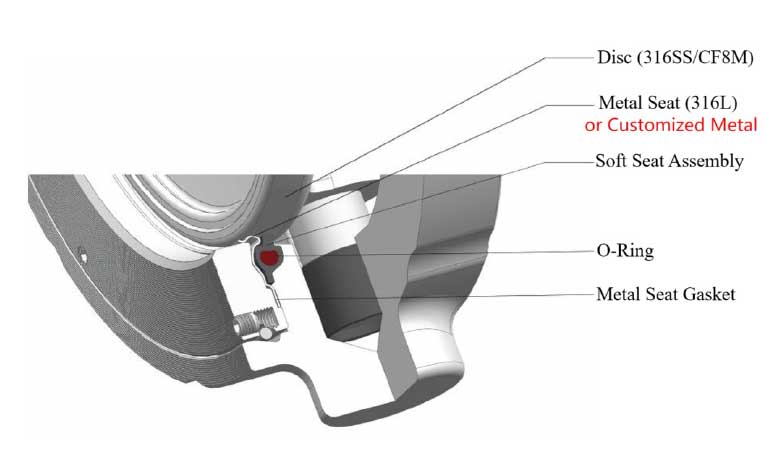High-performance butterfly valves continue to evolve, driven by the need for enhanced sealing, reliability, and efficiency in demanding industrial applications. One notable advancement is the development of innovative sealing technologies, such as the “Arc Surface Sealing High-Performance Butterfly Valve” made by SHANDONG SHENG FEI MACHINERY CO., LTD. This article explores this technology and analyzes how its dual-layer sealing design improves valve body sealing and overall reliability.
The Challenge of Achieving Perfect Sealing
Achieving zero-leakage or near-zero-leakage in butterfly valves, especially under high pressure and varying temperature conditions, has always been a significant challenge. Traditional butterfly valve designs often struggle with long-term sealing integrity due to wear, tear, and deformation of the sealing components.2 Leakage can lead to significant environmental and economic consequences, making robust sealing a critical factor in valve selection.3
SHENGFEI‘s Innovative Approach: Arc Surface Sealing
SHANDONG SHENG FEI MACHINERY CO., LTD has addressed this challenge with its “Arc Surface Sealing High-Performance Butterfly Valve” technology. This innovation centers around a unique dual-layer sealing design:
- Primary Seal: The primary seal is typically a flexible, resilient material (e.g., modified PTFE) molded onto the valve disc’s edge. This seal makes the initial contact with the valve seat and provides the primary barrier against leakage. The arc-shaped design of the sealing surface ensures a more uniform distribution of pressure, enhancing sealing performance.
- Secondary Seal: The secondary seal, usually made of a more durable material (e.g., metal), backs up the primary seal. It engages with the valve seat only when the primary seal starts to deform or fail. This secondary seal acts as a backup, preventing any significant leakage and significantly increasing the valve’s overall reliability.

Benefits of the Dual-Layer Seal Design
The dual-layer arc surface sealing design offers several key advantages:
- Enhanced Sealing Performance: The arc surface provides a larger contact area and more even pressure distribution compared to traditional flat sealing surfaces. This results in superior sealing, even under challenging conditions.
- Increased Reliability: The secondary seal provides redundancy, ensuring that the valve maintains its sealing integrity even if the primary seal is compromised. This dramatically increases the valve’s reliability and reduces the risk of unexpected downtime.
- Extended Service Life: The dual seal design distributes wear between the primary and secondary seals. As the primary seal wears, the secondary seal takes over, prolonging the valve’s overall service life and reducing maintenance requirements.
- Wider Application Range: The improved sealing performance and reliability make these valves suitable for a wider range of applications, including high-pressure, high-temperature, and corrosive environments.
Impact on Industry
SHENGFEI’s “Arc Surface Sealing High-Performance Butterfly Valve” represents a significant advancement in butterfly valve technology. Its innovative dual-layer sealing design addresses a critical need for reliable sealing in various industrial applications. This technology has the potential to:
- Reduce environmental pollution by minimizing leakage.
- Improve operational efficiency by reducing downtime and maintenance costs.
- Enhance safety by preventing hazardous leaks.

Conclusion
Continuous innovation in valve technology is essential for meeting the evolving demands of modern industry. SHENGFEI’s “Arc Surface Sealing High-Performance Butterfly Valve” exemplifies this trend, showcasing how clever design can significantly improve the performance, reliability, and application range of these critical components. As industries continue to prioritize safety, efficiency, and environmental responsibility, advancements like this will play a vital role in shaping the future of fluid control.
